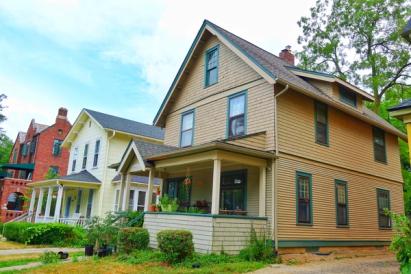The Gender Gap: Women Pay More For Their Mortgage Than Men
Written by:
Own Up Staff
Own Up is a privately held, Boston-based fintech startup that is on a mission to make sure every home buyer receives a fair deal on their mortgage by unconditionally empowering individuals with customized data, personalized advice, and unprecedented access to mortgage lenders to create better financial outcomes and simplify the home financing experience.
See full bio

It’s no secret that the COVID-19 pandemic has exposed deep, systemic discrimination against historically underrepresented groups, including women. In December 2020, a whopping 156,000 jobs were lost by women, accounting for all of the job losses. Meanwhile, men gained 16,000 jobs that same month.
Every year, financial institutions are required to publicly disclose loan-level information about their mortgages through the Home Mortgage Disclosure Act (HMDA). The latest HMDA data makes it clear—women pay more than men for their mortgages in every state in the U.S. except Alaska.
Here are the top five worst and best states in the U.S. for women trying to secure a mortgage:
Five states where women overpay most on a mortgage
| Implied Rates | Interest Cost (30 Y Fixed) | ||||
| State | Female | Male | Female | Male | Delta |
| 1. Mississippi | 3.47% | 3.37% | $216,273 | $209,196 | $7,077 |
| 2. Alabama | 3.44% | 3.36% | $214,074 | $208,068 | $6,006 |
| 3. Ohio | 3.42% | 3.34% | $212,445 | $206,590 | $5,856 |
| 4. Florida | 3.46% | 3.38% | $215,634 | $210,042 | $5,591 |
| 5. New Jersey | 3.26% | 3.18% | $201,467 | $195,952 | $5,515 |
Five states where women overpay least on a mortgage
| Implied Rates | Interest Cost (30 Y Fixed) | ||||
| State | Female | Male | Female | Male | Delta |
| 1. Alaska | 3.21% | 3.23% | $223,383 | $225,039 | -$1,656 |
| 2. Maine | 3.37% | 3.36% | $208,914 | $208,350 | $564 |
| 3. Wyoming | 3.29% | 3.28% | $203,569 | $202,868 | $701 |
| 4. Montana | 3.31% | 3.30% | $204,832 | $204,130 | $702 |
| 5. Oregon | 3.33% | 3.31% | $205,886 | $204,762 | $1,124 |
***Median rate spread was pulled by Application sex [which was limited to A) Male and B) Female; the following were not included 1) N/A, 2) No Info Provided and 3) Both Male and Female] and state from the HMDA database of all loans in 2019. The data was controlled for Purpose: Purchase, Occupancy Type: Primary, Dwelling Category: Single Family, Site Built, and Product: Conventional, First Lien. Median rate spread was translated into an interest rate assuming a prime rate of 3% (giving a median interest rate by gender and state). Interest payment for each state/gender was calculated based on a 360 period payback over 30 years assuming an average loan size of $345,000.
The HMDA data shows that women are paying an unequal price, but why? There are a few possibilities that can exasperate this disparity.
In 2018, Freddie Mac published a study that shows borrowers are leaving money on the table by not shopping multiple lenders for their mortgage. When faced with pricing decisions on gas, groceries, and other goods, consumers often shop around to find a better deal – on the basis of price, value, or quality. But when faced with mortgage decisions, borrowers often settle for the first offer they’re given. Borrowers may not even realize what a fair offer looks like, how loan practices vary by lender, and that every day there is a wide range of rates offered to borrowers for exactly the same scenario. By not shopping and negotiating for a better rate, borrowers are missing access to the full picture and being further exploited by inefficient, or in some cases, predatory lending practices.
The inequity in rates is indicative of a systemic problem and deeper underlying factors. The ability to get a mortgage involves your debt-to-income ratio (DTI) and the rates you receive are influenced by factors such as credit score, loan-to-value ratio (LTV), and property and occupancy type. Without pay equity, women may find themselves with lower DTIs, lower credit scores, and therefore, higher mortgage rates than men.
As the economy slowly rebounds and women re-enter the workforce, experts expect that the number of female homebuyers will steadily rise. While this is promising, it also begs the question: how do we level the playing field and eliminate unnecessary hurdles for women, and everyone else, so they can better equip themselves to optimize the largest financial transaction of their lives?
For us, leveling the playing field starts with a transparent, anonymous mortgage shopping experience. We designed our technology to remove any potential bias from the mortgage process. That means that when a home buyer or homeowner works with us, they are able to access accurate, detailed mortgage offers from a marketplace, without revealing any identifying information to that marketplace.
Furthermore, loan pricing in our marketplace is pre-negotiated, for everyone. Everyone gets our best deal. So when our customers gets offers from our marketplace they are seeing the best we have to offer, regardless of who that customer is.
We’re working hard to make fair, transparent home financing a reality for more borrowers.


